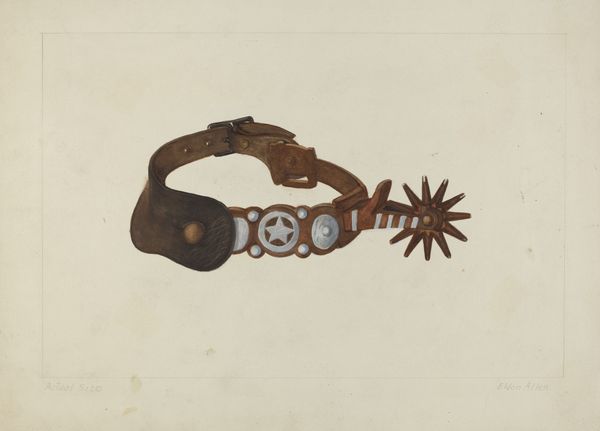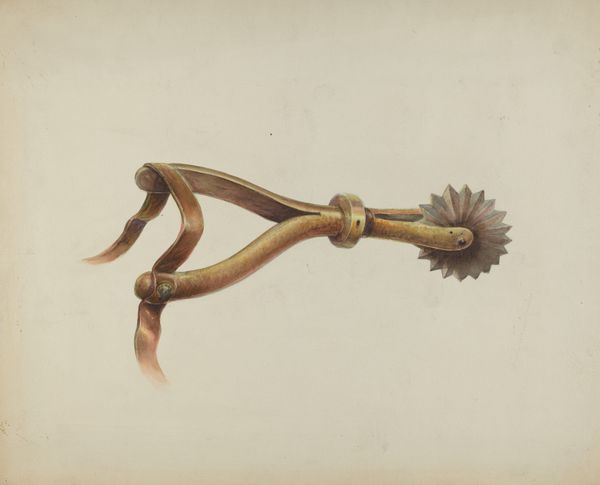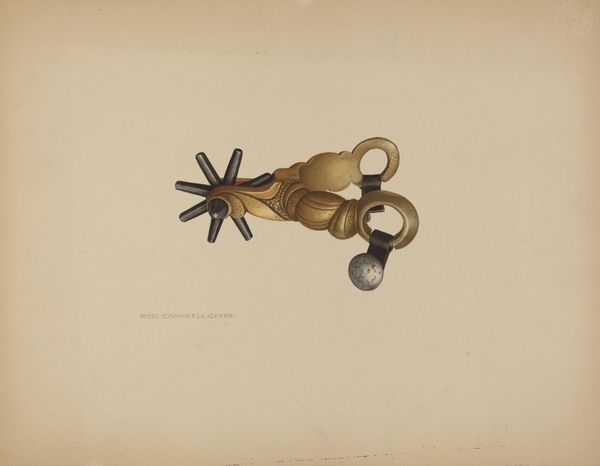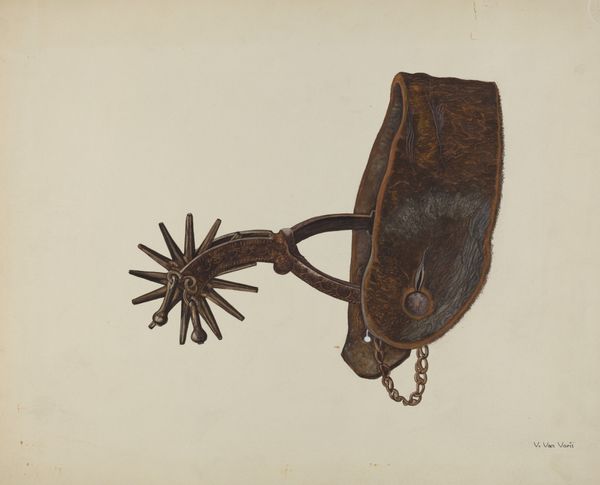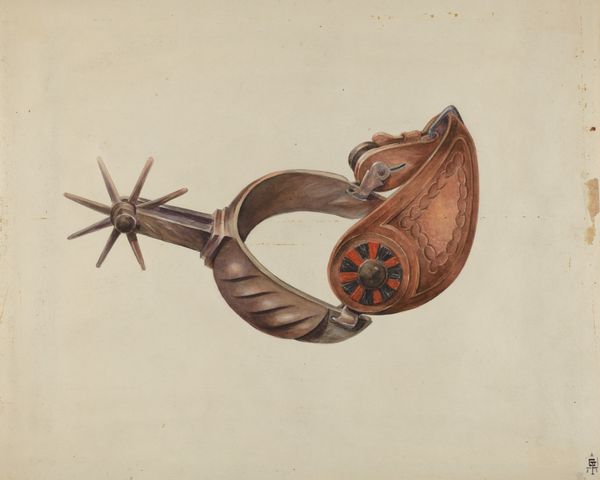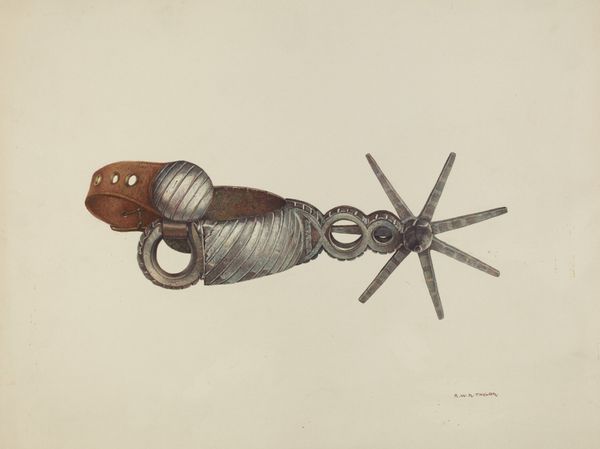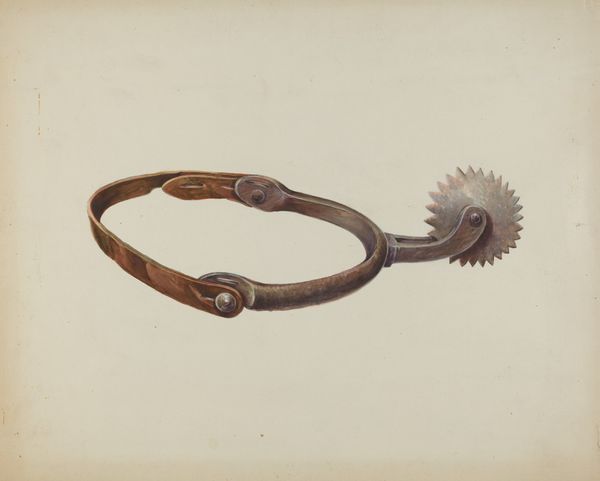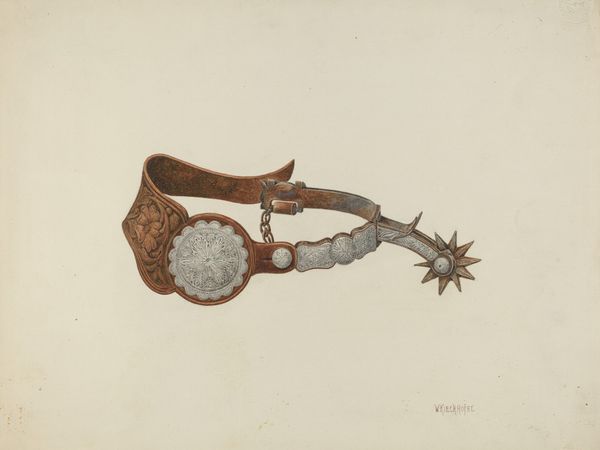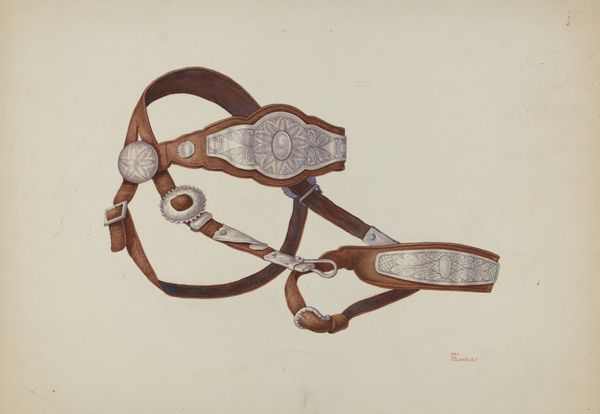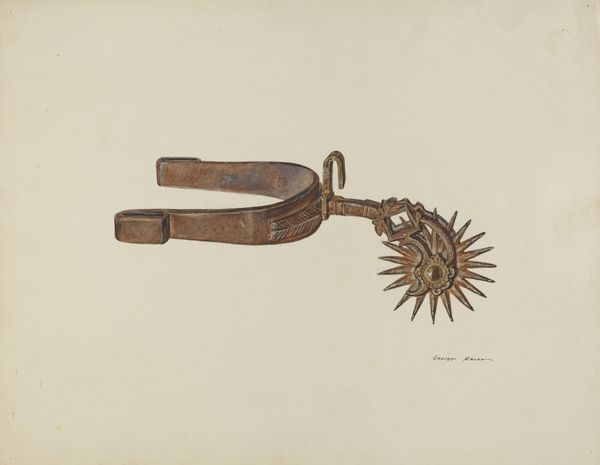
drawing, watercolor
#
drawing
#
watercolor
#
coloured pencil
#
academic-art
#
watercolor
#
realism
Dimensions: overall: 35.7 x 45.8 cm (14 1/16 x 18 1/16 in.) Original IAD Object: 6" in diameter; 5 3/4" long spikes
Copyright: National Gallery of Art: CC0 1.0
Curator: I’d like to draw our attention to this drawing and watercolor piece, titled "Nose Piece (For Weaning Calf)", created around 1938 by John Thorsen. Editor: Ouch! That looks…medieval? Visually arresting but undeniably brutal. It reminds me of a torture device. So simple in its composition but, well, intense. Curator: Indeed. The nose piece itself is an instrument loaded with symbolism when viewed through a historic lens. In farming societies, this would be attached to a young calf to discourage it from nursing. It marks a crucial point of separation and independence. The spikes prevent it to keep eating from its mother. Editor: So it's an abrupt and prickly sort of…graduation present? I wonder how it feels for the calf – this strange object forced onto its face, rewriting its world. It must be incredibly confusing. Curator: Exactly. And consider that in art and mythology, cattle, especially cows, are often associated with maternal nourishment and gentleness. Editor: Which throws this image into even sharper contrast. It's a disruption, a forceful ending of innocence. I'm stuck on the duality—beauty in the execution of this piece against the stark reality of its purpose. Curator: Note the stark contrast between the watercolor medium and the subject matter. Watercolor often evokes softness, and light. Thorsen's meticulous rendering is undeniably academic in approach; it doesn't flinch from depicting something undeniably…prickly. This piece isn't trying to soften the reality. Editor: And the isolation of the object against the blank background amplifies that starkness. It’s almost clinical in its detachment, despite the raw, practical use of the tool itself. It brings to question agricultural systems and how these devices became normalized, or whether, ultimately, they are actually normal or not. Curator: It leaves a resonating impression, forcing us to confront the pragmatic decisions inherent in animal husbandry. It offers a unique perspective on the relationship between humans and animals and how deeply those relationships were engraved. Editor: Looking at this, you can’t help but feel a prick of discomfort, a question mark etched on your heart. What do we truly ask of these animals to be granted milk?
Comments
No comments
Be the first to comment and join the conversation on the ultimate creative platform.

